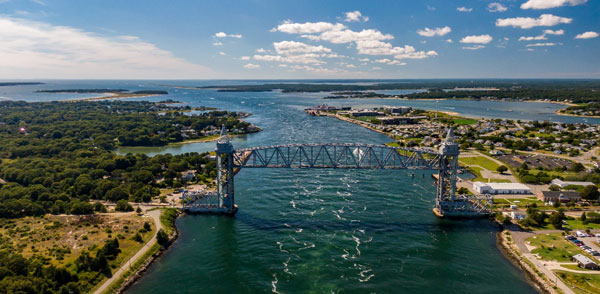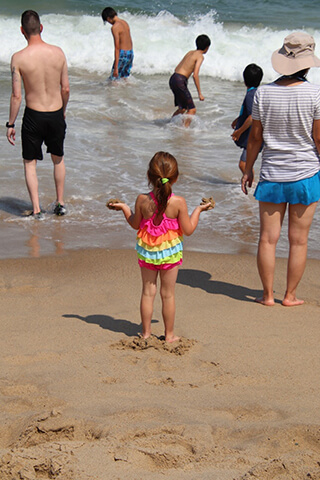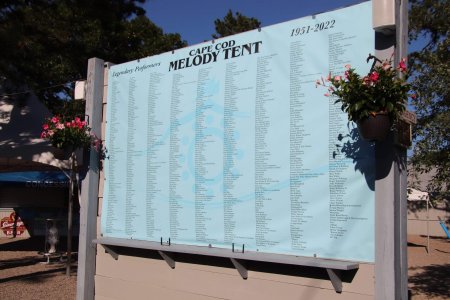How did Cape Cod get its name? The story dates back to 1602 when an English explorer called Bartholomew Gosnold first visited the Cape.
 Cape Cod means a great store of codfish. Cape Cod is a hooked sandy peninsula that juts into the Atlantic Ocean located in Massachusetts in the northeast of the United States.
Cape Cod means a great store of codfish. Cape Cod is a hooked sandy peninsula that juts into the Atlantic Ocean located in Massachusetts in the northeast of the United States.
The Cape extends like an arm to the Atlantic Ocean and surrounds most of Barnstable County in Southern Massachusetts. It stretches 105 kilometers into the Atlantic Ocean with a width of between 1.6 kilometers and twenty kilometers.
Two bridges connect it to the mainland, and it is neighbored by Nantucket Island and Martha’s Vineyard to the south, with Elizabeth Island located to the southwest.
How and where did Cape Cod get its name
The English explorer Bartholomew Gosnold named Cape Cod when he first visited it in 1602. He named the peninsula “Cape Cod” because of the bountiful codfish present in the waters surrounding the peninsula.
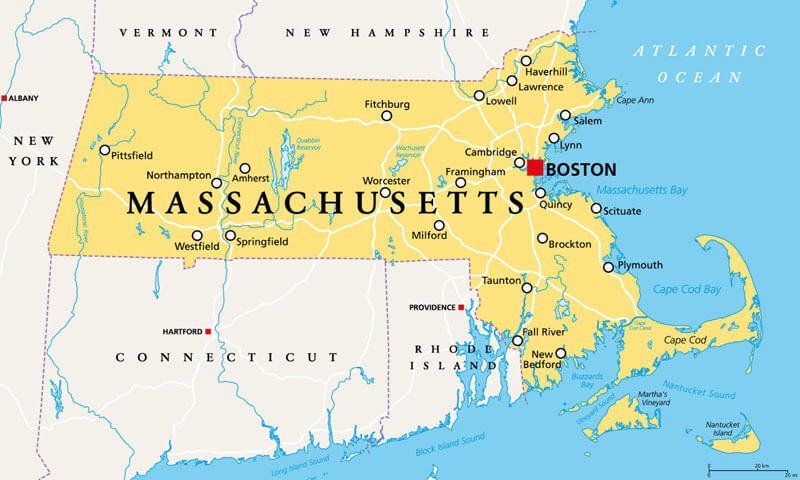
Cape Cod incorporates a canal that cuts across the peninsula base, separating it from the mainland. The canal has helped shorten the shipping distance between New York City and Boston by more than 120 kilometers.
Cape Cod’s climate is majorly influenced by its proximity to the Atlantic Ocean with both the Gulf Stream current and the Labrador current. The Peninsula enjoys a moderate climate compared to that of the mainland having warmer winters and cooler summers.
What is Cape Cod famous for?
Cape Cod is famous for its summer vacation spots. The Cape prides itself in its beautiful beaches, a laid-back lifestyle, sharks, and its connection to the Kennedy family.
Cape Cod has abundant plant life, including beach grasses and trees such as white cedar, red marble, pitch pine, and beech.
Cape Cod has plenty of shorebirds and seabirds, such as piping plovers and terns. Its scenic views, favorable climate, and proximity to the Eastern seaboard major urban areas make it a premier tourist and vacation destination.
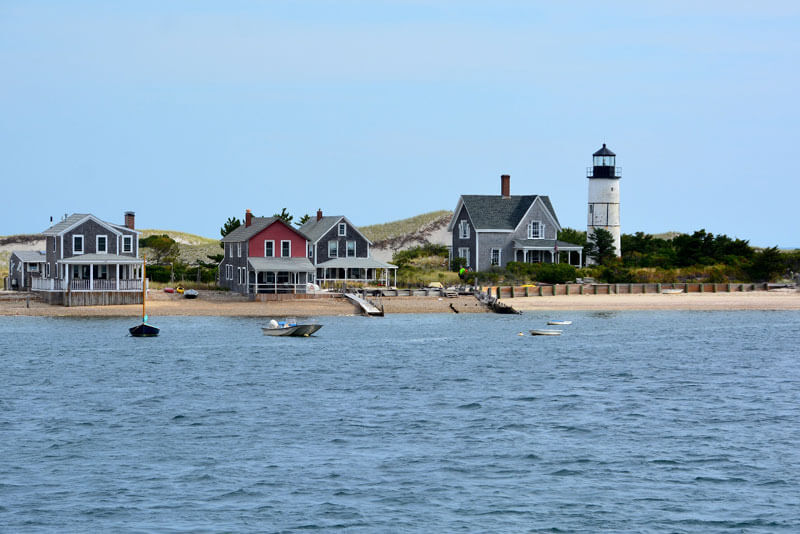
The coastal towns Barnstable, Dennis, Bourne, Chatham, Falmouth, Harwich, Eastham, Woods Hole, Sandwich, Hyannis, Provincetown, Truro, and Wellfleet always enjoy densely populated resorts and busy fishing ports during summers. Woods Hole has a major oceanographic institution that was established in 1930.
Cape Cod has an airport and summer ferries that link the northernmost town, Provincetown, to Boston. Ferries link Provincetown to the other points on the Cape like Martha’s Vineyard and Nantucket. These two towns are the major tourist and vacation destinations on the Cape.
The National Air Base at Cape Cod’s Mashpee, Bourne, and Sandwich is something the Cape people pride in, which boosts the Cape’s economy.
Farming cranberries and asparagus is another significant boost to the economy of the people of Cape Cod.
Which Native American tribe was dominant in Cape Cod?
 The native American tribe that was dominant in Cape Cod was the Nauset people, also referred to as the Cape Cod Indians. They lived east of the Bass River, while the western lands were occupied by their closely related neighbors, the Wampanoag.
The native American tribe that was dominant in Cape Cod was the Nauset people, also referred to as the Cape Cod Indians. They lived east of the Bass River, while the western lands were occupied by their closely related neighbors, the Wampanoag.
Despite them being a very distinct tribe, they were often subject to the Wampanoag, the People of the First Light. They shared numerous similar aspects of culture, agricultural practices, and a common tongue which was the Massachusetts language.
Because the Nauset people lived by the seashore, they relied on seafood more than other tribes. This made fishing a significant part of the community’s economic livelihood.
The Nauset tribe was one of the first to be visited by the European seafarers, whose abduction of tribal members for slavery and introduction of diseases reduced the Nauset population way before the large-scale colonization of New England happened.
The first contact with the Nauset by the English explorers happened during the Mayflower’s landing near present-day Provincetown. This was a time when the explorers discovered a deserted village.
At this point, the Nauset people were away at their winter hunting grounds. Desperately low on supplies, the English explorers who were Christians helped themselves to a cache of maize, leaving a note (in English) promising to pay for what they had stolen.
This promise was honored by the explorers when they eventually put it under the leadership of Aspinet months later.
The Nauset people also found a young English boy who had wandered and returned him to the explorers. This was a simple act, but it significantly improved their relationship with the colonists.
Later on, the Nauset tribe became the closest allies of the English colonists. This led to most of them being Christianized. They aided the colonists as scouts and warriors against the Wampanoag during King Phillip’s war.
They were a small group, but the war reduced them even further. The addition of other American Indian tribes after King Philip’s War and intermarriage with other settlers helped preserve the Indian lineage.
5 Historical facts about Cape Cod
Cape Cod has a rich history spanning decades. The Cape has an ever-changing shore that adjusts to the rising sea.
1. The Pilgrims and explorers first landed in America at Cape Cod
The first English explorers who were missionaries first settled at Cape Cod.
At this point, they found potable water and food and had their first fight with the natives.
However, they did not stay here for long since the land was too sandy to support them. Hence, they sailed across Cape Cod to Plymouth, where they established their first station.
2. The economic livelihoods of Cape Cod are all dependent on the sea
For centuries, Cape Cod has become home to fishermen who want to make a livelihood out of the sea as well as exploration of the landscape and ocean. The Cape beaches are also a great tourist destination.
3. Explorers built the first homes in Cape Cod
The local tribe taught the pilgrims how to build their first home.
They used wigwams, twigs, bark, hides, cornstalks, and grasses to build the houses, which they copied from the architectural designs of the local Wampanoag people.
The Cape Cod cottage and steep-roof saltbox are still some of the most popular house styles on the Cape, which have become a favorite design copied all over the country.
These houses were designed to accommodate growing families back in the day.
4. The first train service at Cape Cod began in 1848
The first-ever train service from Boston began in 1848, reaching Sandwich town. By 1873 it had extended to Provincetown.
5. The Cape Cod Canal opened in 1914
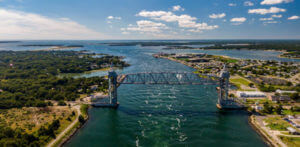 In the 17th century, the idea of a Cape Cod Canal, linking the Cape Cod Bay to Buzzards Bay, was born.
In the 17th century, the idea of a Cape Cod Canal, linking the Cape Cod Bay to Buzzards Bay, was born.
But it was not executed until 1914 when a privately built canal merged the waters of the two bays.
The channel was quite narrow and winding. It allowed only one-way traffic, which created dangerous currents.
The US Army Corps of Engineers later rebuilt the canal. In the 1930s, three bridges went up on Cape Cod, making its accessibility to the mainland easier.
Cape Cod Exposure to the Sea
Cape Cod was open and exposed to the sea. This made it easy to spot; hence many early explorers settled on this Peninsula.
The English explorer Bartholomew Gosnold named Cape Cod when he first visited it in 1602. He produced Cape Cod’s name because of the bountiful codfish present in the waters around the Cape.
The Wampanoag and Nauset people lived here for thousands of years before the Europeans arrived and claimed to be the Cape’s first settlers.
Cape Cod is well known for its coastline that has sandy beaches attracting tourists all year round. The cool climate during summer makes it a favorite destination for many tourists.
The building of the Mid Cape Highway was a great boost to the Cape in both infrastructure and economic growth.
When John F. Kennedy rose to the White House as the US president, which highly added to the area’s allure.
Fishing, tourism, and agriculture have been the main pillars supporting the economic livelihood of this beautiful Cape.
Now that you have learned how did Cape Cod get its name, you can learn more about Cape Cod’s history here.


